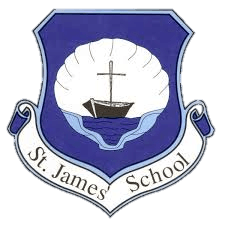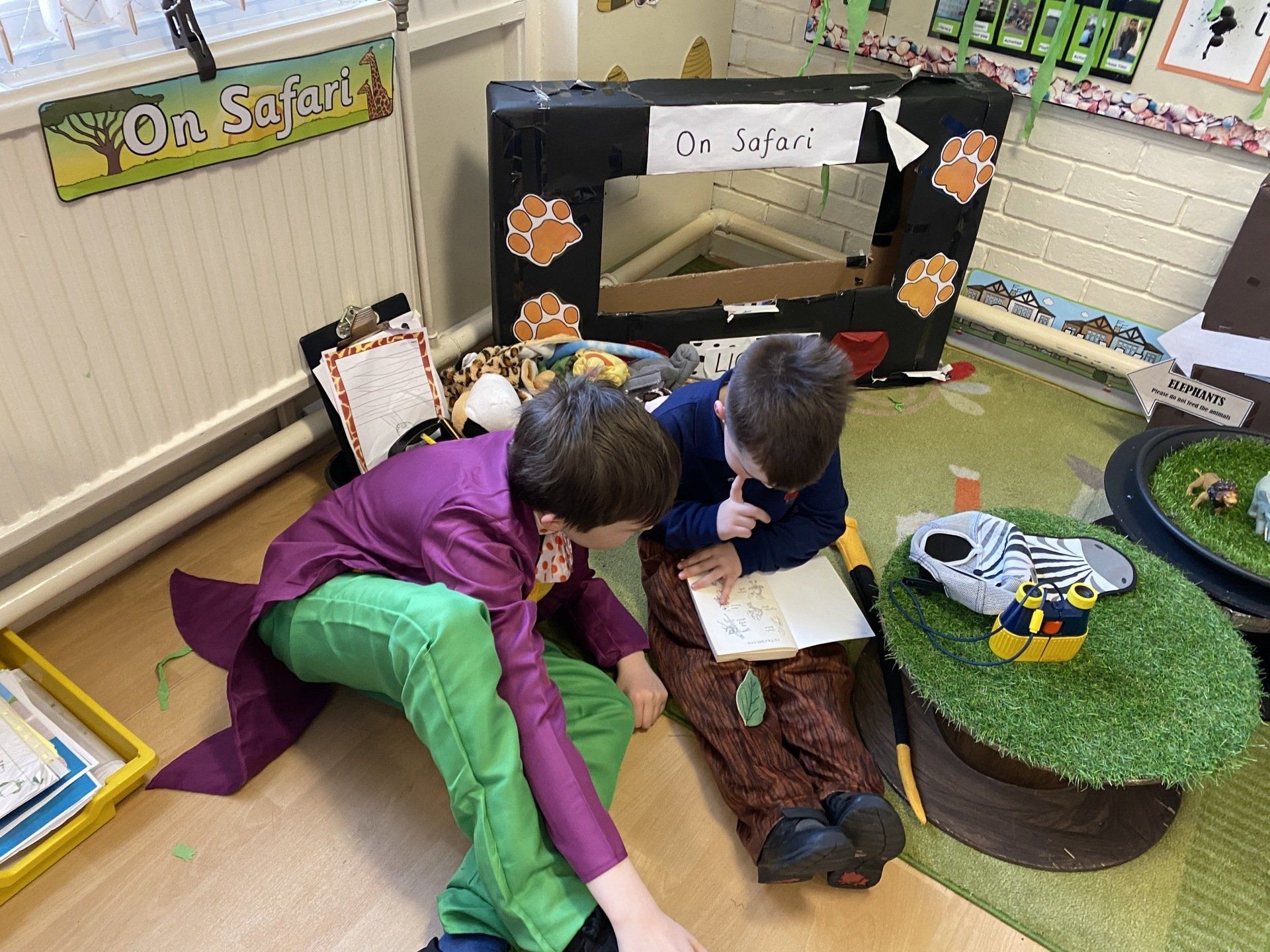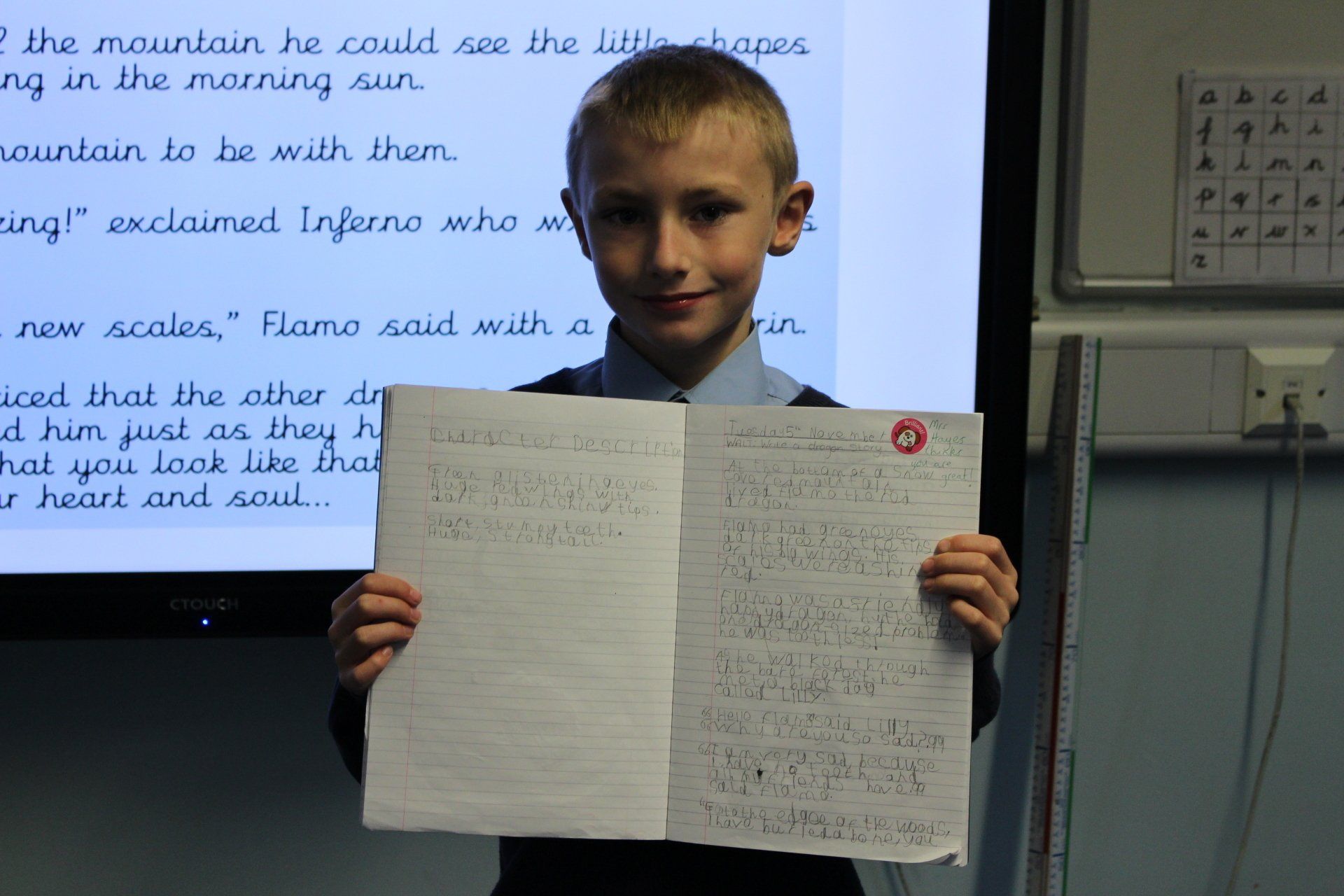Writing
Our Bespoke Writing Spine
At St James' Catholic Primary School, we have created a bespoke writing spine that guides children through all the key genres of writing they will encounter during their time in primary school. This ensures that every child receives a rich and balanced writing experience, tailored to their age and stage of development.
Genres of Writing We Cover
Our writing spine includes all major genres taught in primary education, such as:
- Narrative writing – stories, character descriptions, and setting development
- Non-fiction writing – reports, explanations, instructions, recounts, and persuasive texts
- Poetry – exploring rhythm, rhyme, imagery, and performance
Children learn how to write for different purposes and audiences, helping them become confident and versatile writers.
Year-by-Year Writing Objectives
Each year group has specific writing objectives that build on previous learning. These include:
- Grammar and punctuation skills appropriate to their age
- Spelling and vocabulary development
- Sentence structure and paragraphing
- Planning, drafting, editing, and publishing work
Our spine ensures that these objectives are taught in a logical and progressive way, so children develop strong writing foundations and grow as independent writers.
Why It Matters
Our bespoke writing spine supports high-quality teaching and ensures consistency across the school. It helps children:
- Develop a love of writing
- Write with purpose and creativity
- Meet national curriculum expectations
- Prepare for future learning and life beyond primary school
Spelling
Spelling Shed is the scheme we use at St James’ Catholic Primary School to help children become confident spellers and readers. It’s designed to support all learners through games, structured lessons, and personalised practice.
Why Spelling Shed?
Spelling Shed is built on the Science of Reading, which emphasises the connection between spelling and reading. It uses a systematic approach that includes:
- Phonics: Teaching the relationship between sounds and letters.
- Morphology: Understanding word parts like prefixes, suffixes, and roots.
- Etymology: Exploring the origins of words to deepen understanding.
- Orthographic Mapping: Helping children store words in long-term memory by linking sounds to spelling patterns.
Why We Use It at St James Catholic Primary School
At St James, we believe that spelling is foundational to literacy. Spelling Shed supports our goals by:
- Providing a structured curriculum that builds on prior knowledge and supports mastery.
- Allowing pupils to practice at home and in school, reinforcing learning across contexts.
- Supporting our focus on reading fluency and vocabulary development, which are essential for academic success.
Handwriting
At St James’ Catholic Primary we use the Nelson Handwriting Sheme.
What Is Nelson Handwriting?
Nelson Handwriting is a well-established and widely used handwriting programme published by Oxford University Press. It teaches children how to:
- Form letters correctly and consistently
- Develop fine motor skills and pencil control
- Use appropriate joins between letters
- Write fluently and legibly at speed
- Present their work neatly across all subjects
The scheme follows a clear progression:
- Early Years & Year 1: Focus on posture, pencil grip, and basic letter formation alongside phonics.
- Year 2: Introduction to joining letters and spacing.
- Years 3–4: Development of joined handwriting and consistency in size and spacing.
Years 5–6: Fluent, joined-up writing adapted for different contexts and purposes.
Why We Use It at St James'
We believe that good handwriting is more than just neat presentation—it’s a vital skill that supports learning across the curriculum. The Nelson scheme helps us:
- Ensure a consistent approach to handwriting across all year groups
- Support children with motor development and coordination
- Build confidence and pride in written work
- Meet the expectations of the National Curriculum and Ofsted’s Education Inspection Framework
Children are taught handwriting regularly, and high standards are expected in all written work. The scheme also includes engaging resources and activities that make handwriting enjoyable and purposeful.
Writing Policy





